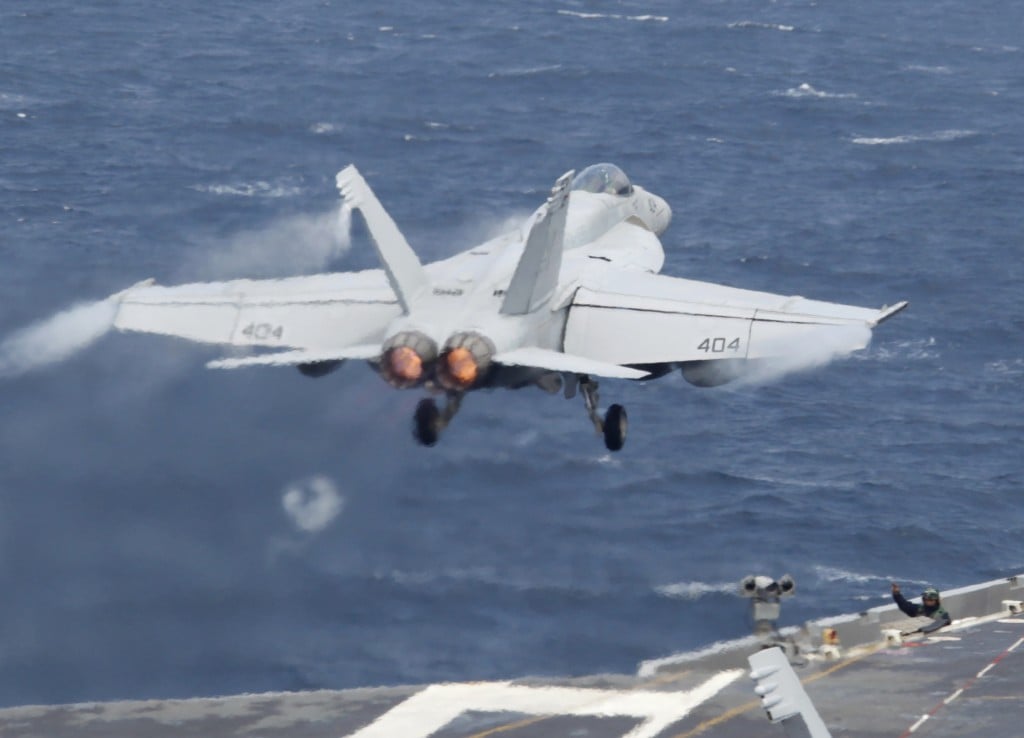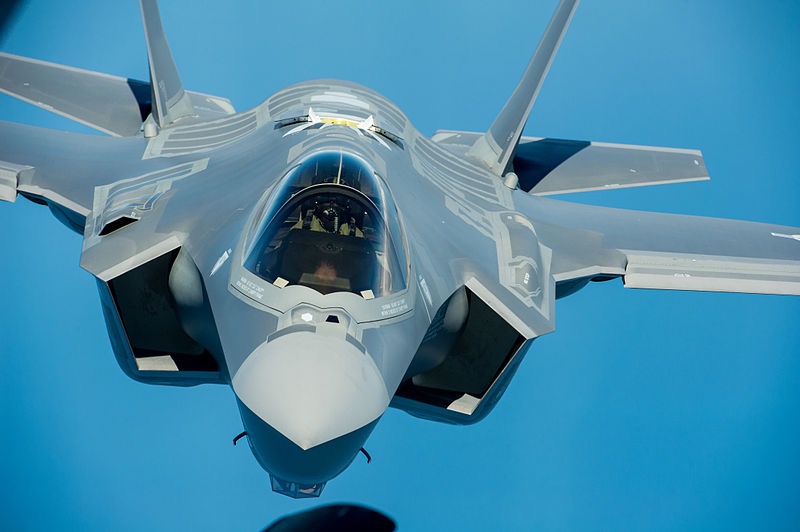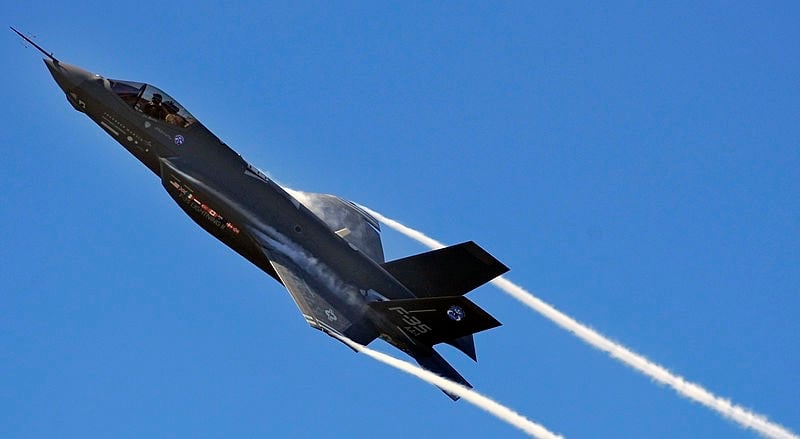Threat Data Biggest Worry For F-35A’s IOC; But It ‘Will Be On Time’
Posted on
PENTAGON: The F-35‘s highly sensitive sensors suffer a basic problem right now: They often aren’t sure what they are detecting. That results in a high rate of false alarms. The key to fixing this lies in building highly complex data files — what we can colloquially call the threat library — and integrating them with the Joint Strike Fighter‘s software.
“I think the probably the biggest concern is with these mission data files [threat library],” Maj. Gen. Jeffrey Harrigian told me in his first interview since being named at the end of January to coordinate procurement and integration of the F-35A into the Air Force. “With any detection systems, it’s always a chore to work through what the sensor is actually seeing.”
Creating those threat files is complex enough. The data on missile launches, frequencies, opponents’ weapons and their sensors come from the Intelligence Community (IC). The Office of Secretary of Defense’s Intelligence Mission Data Center gathers the data from across the IC. A lab at Nellis Air Force Base turns that information into threat data for the Air Force’s weapons.
The Air Force civilian who handles F-35A integration, Thomas Lawhead, said the missile warning data fusion for the F-35 “is still a little too sensitive.” An Air Force officer involved with the building of the threat library told me recently that most of it is still being built and much of the combination of the plane’s fusion software and threat information won’t be ready until close to Air Force IOC.
But Harrigian several times told me calmly variations on this: “I’m very confident we are going to get to IOC on time.”
In his 2014 annual report, the director of Operational Test and Evaluation described the sensors this way: “fusion of information from own-ship sensors, as well as fusion of information from off-board sensors is still deficient. The Distributed Aperture System continues to exhibit high false-alarm rates and false target tracks, and poor stability performance, even in later versions of software.”
Full integration of the threats and the aircraft software won’t occur until close to Full Operational Capability, in part because it takes time for pilots, intelligence analysts and the plane’s builder — Lockheed Martin — to figure out exactly what the sensors are capable of and how the software should be redesigned to do the best job of taking the sensors information and the threat information and helping them work together.
In part, that’s because the F-35 gathers so much more data through its array of sensors than does its fifth generation cousin, the F-22.
On top of the challenges of assimilating and integrating the threat library data, Herrigian says they are looking hard at how to get the huge quantities of data collected by the F-35 from the plane to ground forces and ships. “As we look long at this airplane and look at the capability of the airplane to bring in all this information, how do we get it off the airplane to support the joint warfighter? We’ve talked about it, but this will take some thinking and working with the joint team to figure out how to do it appropriately.”
Since Harrigian was picked for the job to improve the service’s access to program information and give it a senior general as advocate, I asked him for an example where his rank made a difference.
About 10 days ago, he got word that pilots and maintainers needed the technical orders about the moderately famous engine “bad rub” described to the world by Lt. Gen. Chris Bogdan, head of the F-35 program.
“We were trying to understand exactly where the hold up was; whether it was the program office or AFMC [Air Force Materiel Command],” Harrigian told me. An email went out bearing the imprimatur of the two-star general. Magic! Answers were found. Problem solved. He grinned as he told me what happened.
One of the F-35’s crucial aspects has not been discussed much: keeping it stealthy. While Breaking Defense readers know from retired Gen. Mike Hostage that the F-35 is a stealthier airplane than the F-22. But one of the crucial aspects of stealth has always been maintaining it. How much does stealth degrade during operations? How long does it take to restore it? How much does it cost to maintain? Lockheed Martin has long boasted about the F-35’s designed-in stealth.
“I would call it one of the success stories,” Harrigian said. “But I was skeptical early on.”
Col. Carl Schaeffer, who was the Air Force’s top integration guy on the F-35 until Harrigian was named, entered the conversation and was about as positive as one can get on such a topic: “The high point for this program is the LO [Low Observables] maintainability.” He pointed to the creation by Lockheed Martin of an LO “innovation team,” formed with a range of highly experienced stealth experts as a key reason behind the success of the aircraft’s relatively easy maintenance. No one in the room offered any details except to note that no one has to apply multiple coatings that wear off. Also, Lorraine Martin, head of Lockheed’s work on the F-35, recently made it clear that the designed-in stealth has been made easier to create and maintain thanks to automation.

Navy F/A-18 Super Hornet
In other F-35 news from Tuesday’s Senate Armed Services Committee hearing on the Navy Department, Adm. Jonathan Greenert said his service is “on track” for its IOC in late fiscal year 2018 — but again, software is an issue. “My concern is that the software is able to integrate all of the weapons that we have in the current aircraft in our air wing. This aircraft has to fit into our air wing: We can’t fit the air wing around the aircraft.”
Greenert has long been portrayed as a very reluctant supporter of the F-35C, mainly because of his concerns about stealth. Most of those comments have been either misunderstood or mischaracterized, but the Navy clearly is paying much closer attention to the F/A-18E/F Super Hornet than to its F-35C variant of the Joint Strike Fighter right now. Talking to reporters after today’s hearing, Greenert made clear the service’s attention and anxiety focused on the F-18s: “In the end, the question is, when we go to the Joint Strike Fighter/Super Hornet integrated air wing out there, do we have enough Super Hornets? Will we be able to SLEP [Service Life Extension Program] them? I’m concerned about that shortfall.”
The Navy’s “fighter shortfall” has been an issue under debate for at least six years. But the pace of Navy fighter operations has not declined much over that period and rebuilding F-18s to keep them flying for many more hours is taking longer than expected so the problem doesn’t seem to be going away.
Meanwhile, the Marines remain the service most relentlessly committed to and optimistic service the F-35, even under a new commandant, Gen. Joseph Dunford. Their F-35B variant will be the first to reach IOC, this summer — Dunford pledged that they’re on track — and will replace three different kinds of aircraft. “It doesn’t just replace the F-18, the AV-8, and the EA-6,” Dunford told the committee. It’ll do
everything those three aircraft can do but also in…the information environment, it’ll do a significant amount more for the Marine Air-Ground Task Force.”
Doing more in the information environment, though, requires getting those sensors and their software to work.
Sydney contributed the SASC elements to this story.
Subscribe to our newsletter
Promotions, new products and sales. Directly to your inbox.


